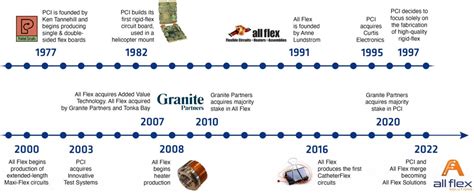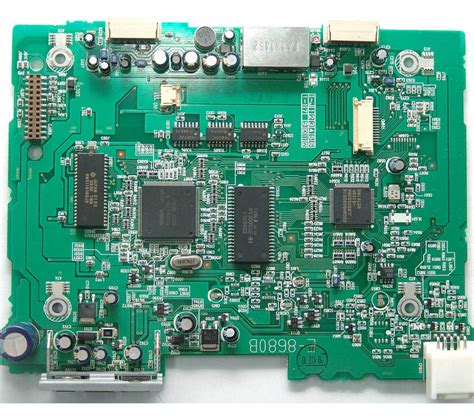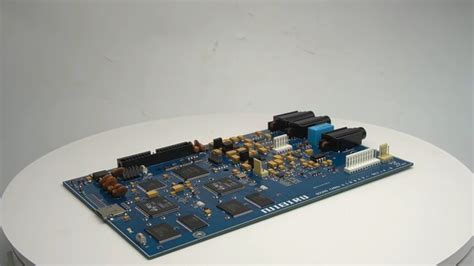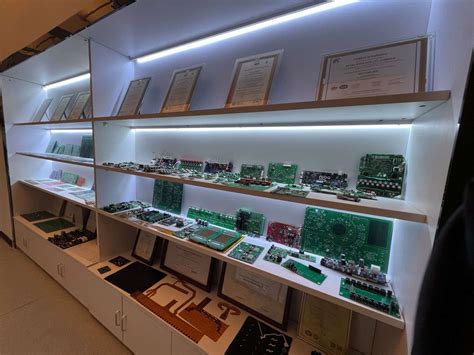Unleashing Innovation: The Power of All Flex Circuits
Key Takeaways
In the ever-evolving landscape of electronics design, All Flex Circuits play a pivotal role in fostering creativity and innovation. With their flexible and rigid flex solutions, these circuits provide you with the ability to optimize space, thus catering to the relentless demand for miniaturization. As you explore options among various pcb manufacturing companies, consider how All Flex Circuits can enhance the functionality of your designs. Not only do they support complex circuitry, but they also significantly reduce pcb manufacturing costs by streamlining the design process. This innovation ensures that you remain competitive in the ever-expanding pcb manufacturing business, while guaranteeing high reliability for applications in critical sectors such as medical, aerospace, and defense. The incorporation of All Flex technology brings about a transformation that not only meets but exceeds the expectations placed upon these applications, ensuring they operate flawlessly under demanding conditions. Therefore, engaging with All Flex Circuits isn’t just a choice; it’s a commitment to embracing advanced capabilities in electronic design that can lead your projects to success.
Unleashing a New Era in Electronics Design with All Flex Circuits
In the ever-evolving landscape of electronics design, All Flex Circuits represent a significant paradigm shift. These innovative solutions offer unparalleled flexibility, allowing for the creation of both flexible and rigid flex circuits that meet the diverse needs of various industries. By integrating All Flex technology into your projects, you can enhance functionality, streamline design processes, and ultimately reduce pcb manufacturing costs. This is especially crucial in sectors where space is at a premium, such as in medical devices or aerospace applications.
The versatility of All Flex Circuits enables you to explore designs that were previously considered impractical. With their capacity for miniaturization and increased reliability, you can challenge traditional norms set by conventional solutions provided by pcb manufacturing companies. As you consider adopting these technologies, it’s important to remember that leveraging these advanced circuits can lead your business to outperform competitors, establishing itself firmly within the demanding realm of the pcb manufacturing business.
“Integration of flexible circuitry isn’t just about improving layout efficiency; it’s about reimagining what’s possible in electronic design.”
As you embark on this journey towards embracing All Flex Circuits, ensure that you’re well-informed about current trends and market dynamics to fully harness their potential in revolutionary designs. To further enhance your understanding and capabilities in this field, there are resources available through reputable platforms such as Andwin PCB that offer valuable insights and support tailored for your pcb manufacturing initiatives.
The Advantages of Flexible and Rigid Flex Solutions
The increasing complexity of modern electronics necessitates innovative approaches, making All Flex Circuits a pivotal player in the evolving landscape of pcb manufacturing. Flexible and rigid flex solutions provide unparalleled advantages that enhance your designs’ functionality and adaptability. For instance, these circuits enable you to save space, allowing for miniaturized products that are crucial in competitive sectors such as medical devices and aerospace. In contrast to traditional rigid circuits, All Flex Circuits contribute to a reduction in the pcb manufacturing cost, as they often require fewer components and less assembly time, thus streamlining the overall process. Moreover, partnering with specialized pcb manufacturing companies enables you to tap into their expertise in creating tailored solutions that meet stringent reliability demands across specialized applications like defense systems. By understanding the potential of these circuits, you can elevate your designs while ensuring they meet the highest standards of durability and performance needed in critical industries. The shift towards flexibility is not merely a trend; it is a fundamental evolution in how next-generation electronics are engineered.
Driving Miniaturization: How All Flex Circuits Meet Growing Demands
In today’s rapidly evolving technological landscape, the demand for miniaturization is more pronounced than ever. You may find that utilizing All Flex Circuits can significantly help you meet these growing demands. As you explore the innovations in pcb manufacturing, these circuits provide a unique solution that allows for high-density designs without sacrificing functionality. All Flex Circuits enable you to streamline your projects, ensuring that even in compact spaces, your electronic designs can maintain high performance and reliability. This flexibility not only enhances the aesthetic aspects of your product but also contributes to a reduction in overall pcb manufacturing cost by minimizing material usage and simplifying assembly processes. With the emergence of various pcb manufacturing companies, integrating rigid flex solutions into your products can set you apart in a competitive market. Ultimately, adopting these advanced circuit technologies positions your pcb manufacturing business at the forefront of innovation, making it easier to fulfill diverse customer needs while addressing safety and operational efficiency across critical sectors, such as medical and aerospace industries. By leveraging All Flex Circuits, you’re not merely adhering to trends; you’re driving them while fortifying your commitment to innovation and excellence in design.
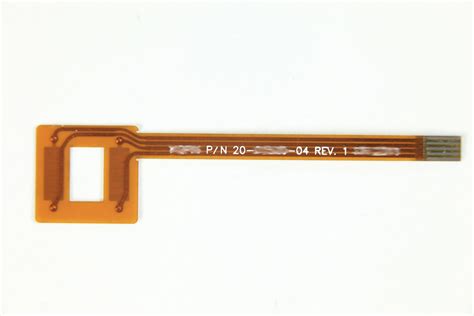
Enhancing Reliability in Critical Applications with All Flex Technology
The integration of All Flex Circuits plays a pivotal role in enhancing the reliability of electronic systems, particularly in critical applications such as those found in the medical, aerospace, and defense sectors. These circuits allow for innovative solutions that can adapt to the rigorous demands of harsh environments. By utilizing flexible and rigid flex technologies, you can improve functionality without sacrificing durability. In a world where components are often subject to stress and vibration, the use of All Flex technology mitigates risks associated with traditional assembly methods. This adaptability not only addresses challenges but also reduces pcb manufacturing costs, contributing to more efficient production cycles. When you partner with leading pcb manufacturing companies, you are equipped to meet high standards for reliability, ensuring that your designs withstand real-world conditions without failure. Furthermore, adopting All Flex solutions positions your pcb manufacturing business at the forefront of technological advancement while promoting miniaturization—a crucial factor as devices continue to shrink in size yet expand in capability. This technological synergy not only enhances performance but also bolsters the confidence stakeholders have in mission-critical systems where failure is not an option. Through leveraging these advanced flexible circuits, you embrace a new paradigm of reliability that is indispensable for today’s electronic design landscape.

Case Studies: All Flex Circuits in Medical, Aerospace, and Defense
In recent years, the integration of All Flex Circuits in the medical, aerospace, and defense sectors has showcased their transformative potential. These sectors demand high levels of precision and reliability, where flexible and rigid flex solutions significantly enhance performance. Take the medical industry, for instance; the adoption of these circuits has led to smaller, more efficient medical devices that facilitate advanced diagnostic tools with minimal weight. As a result, manufacturers have turned to specialized pcb manufacturing companies that focus on this innovative technology.
In aerospace applications, where space is at a premium and failure is not an option, All Flex Circuits play a crucial role. Their ability to conform to complex shapes allows designs that optimize space without compromising functionality. By reducing the pcb manufacturing cost, these solutions provide a strategic advantage in designing avionics systems that are both lightweight and robust.
Furthermore, in defense applications where technology must endure extreme conditions, these circuits exhibit extraordinary reliability. They withstand environmental stressors while ensuring operational integrity—a critical requirement for defense systems. A comparative look at traditional vs. flexible options reveals marked improvements when utilizing All Flex technology.
| Industry | Benefits of All Flex Circuits |
|---|---|
| Medical | Minimized device size; increased diagnostics accuracy |
| Aerospace | Space optimization; weight reduction |
| Defense | Enhanced durability; operational integrity under extreme conditions |
Emphasizing functionality, miniaturization, and reliability, these case studies illustrate how All Flex Circuits are not merely an alternative but a necessary advancement in pcb manufacturing business for sectors requiring cutting-edge innovation.
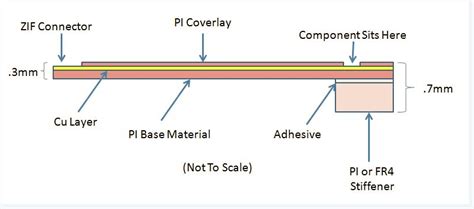
Designing for Success: Best Practices with All Flex Solutions
In the world of pcb manufacturing, adopting best practices with All Flex Circuits can significantly enhance your design and production outcomes. When working with flexible and rigid flex solutions, it is essential to understand the specific requirements of your project and how these circuit types can fulfill them. Selecting the right pcb manufacturing companies that specialize in flexible design ensures that you can leverage their expertise to create products that meet both performance and cost expectations. Considerations such as layer count and material specifications are critical; thus, collaborating closely with manufacturers can help optimize your designs for functionality while keeping pcb manufacturing costs manageable. Furthermore, implementing design tools that facilitate real-time feedback during the process helps in avoiding potential pitfalls, while also promoting efficient iterations. In your pcb manufacturing business, fostering a culture of continuous learning about material properties and production technologies will not only keep your team informed about advancements in the field but also position you to respond adeptly to market demands. Prioritizing these practices when utilizing All Flex Circuits will contribute to a smoother workflow and superior end products capable of thriving in competitive landscapes.
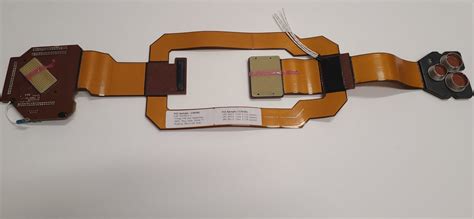
The Future of Electronics: Trends Influencing All Flex Circuit Innovation
As you explore the evolving landscape of pcb manufacturing, it’s clear that innovation drives progress in the electronics sector, particularly through all flex circuits. This technology enables designers to push boundaries, creating compact and efficient solutions that cater to diverse applications. Driven by increasing demand for miniaturization and enhanced functionality, pcb manufacturing companies are adopting flexible and rigid flex solutions that adapt seamlessly to changing technological requirements. Integration of advanced materials and fabrication processes is leading to a significant reduction in pcb manufacturing costs, allowing for cost-effective production without compromising on quality or reliability. The term “flexibility” has never been more relevant, as you witness how these circuits enable new designs that fit into tighter spaces while maintaining durability in critical sectors like medical devices, aerospace instrumentation, and defense systems. As the pcb manufacturing business continues to evolve, staying ahead of trends such as sustainable practices and rapid prototyping will be pivotal. Embracing these innovations will not only enhance your product offerings but also position your endeavors at the forefront of future electronics applications.
A Comparative Analysis: Traditional vs. All Flex Circuit Solutions
When considering the differences between traditional circuits and All Flex Circuits, you quickly discover the significant advantages that the latter offers in terms of design flexibility and functional capacity. Traditional circuits, while reliable, often fall short in meeting the demands of modern electronic applications that prioritize minimization and versatility. In contrast, All Flex Circuits, which can be manufactured using advanced methods, are tailored to meet specific needs across various sectors including medical, aerospace, and defense. With pcb manufacturing techniques evolving, these circuits enable a combination of flexible and rigid designs that enhance efficiency and overall performance. Your choice of pcb manufacturing companies can further impact pcb manufacturing cost, ensuring you opt for solutions that bolster innovation while remaining budget-conscious. The shift from traditional solutions to All Flex technology represents not just a trend but a vital evolution in the pcb manufacturing business, allowing engineers to explore new possibilities in the realm of electronic design. The comparative benefits underscore why making informed decisions can propel your projects toward success in increasingly competitive environments.
Conclusion
In summary, All Flex Circuits are transforming the landscape of pcb manufacturing, paving the way for more innovative and versatile designs. These circuits facilitate advanced solutions by integrating flexible and rigid designs, thereby meeting the rigorous demands of industries such as medical, aerospace, and defense. As you consider your options among different pcb manufacturing companies, it’s essential to understand how All Flex technology enhances both functionality and reliability. The potential for miniaturization they offer allows designers to create compact solutions without compromising performance. When evaluating pcb manufacturing cost, you should weigh these advantages carefully, as investing in All Flex technology can yield significant long-term benefits for your pcb manufacturing business. With these circuits, you are not just adopting a new technology; you are embracing a future that prioritizes efficiency and innovation in every design endeavor.
FAQs
What are flex circuits and how do they work?
Flex circuits, or flexible printed circuits, are versatile circuit boards made of flexible materials that allow for complex electronic designs. They can be easily bent and shaped, making them ideal for applications in compact spaces.
How do flexible and rigid flex solutions compare to traditional PCB manufacturing?
Unlike traditional PCBs, which are rigid, flexible and rigid flex solutions enable greater flexibility in design. They combine flexibility with high reliability, reducing the need for connectors or solder joints that can be sources of failure.
What industries benefit the most from using all flex circuits?
Industries such as medical, aerospace, and defense significantly benefit from all flex circuits because they enhance functionality while ensuring reliability and durability in critical applications.
Can I find PCB manufacturing companies that specialize in all flex circuit technology?
Yes, many PCB manufacturing companies now offer specialized services to produce all flex circuits, ensuring that your electronics meet the latest standards of efficiency and innovation.
What factors contribute to the overall PCB manufacturing cost of flexible circuits?
The PCB manufacturing cost for flexible circuits depends on various factors including material selection, complexity of design, layer count, and production volume. Custom specifications may also affect pricing.

